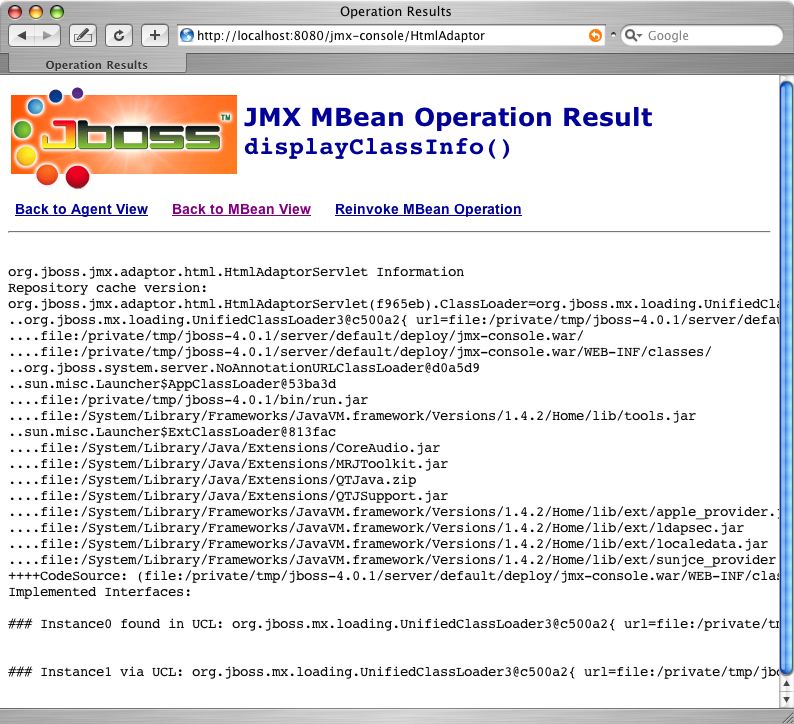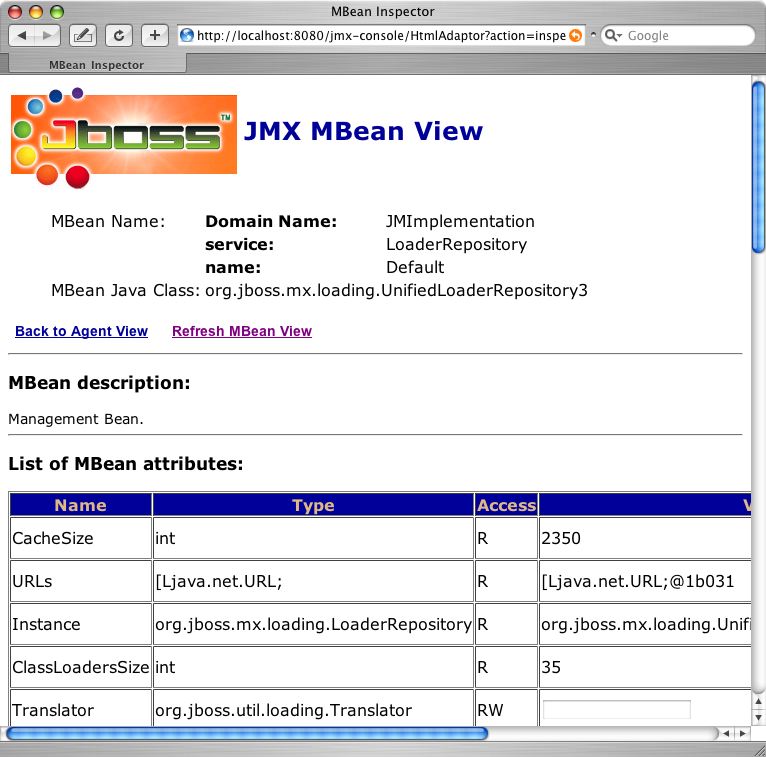Another useful source of information on classes is the UnifiedLoaderRepository itself. This is an MBean that contains operations to display class and package information. The default repository is located under a standard JMX name of JMImplementation:name=Default,service=LoaderRepository, and its MBean can be accessed via the JMX console by following its link from the front page. The JMX console view of this MBean is shown in Figure 3.4, “The default class LoaderRepository MBean view in the JMX console”.
Two useful operations you will find here are getPackageClassLoaders(String) and displayClassInfo(String). The getPackageClassLoaders operation returns a set of class loaders that have been indexed to contain classes or resources for the given package name. The package name must have a trailing period. If you type in the package name org.jboss.ejb., the following information is displayed:
[org.jboss.mx.loading.UnifiedClassLoader3@e26ae7{
url=file:/private/tmp/jboss-5.0.0/server/default/tmp/deploy/tmp11895jboss-service.xml,
addedOrder=2}]
This is the string representation of the set. It shows one UnifiedClassLoader3 instance with a primary URL pointing to the jboss-service.xml descriptor. This is the second class loader added to the repository (shown by addedOrder=2). It is the class loader that owns all of the JARs in the lib directory of the server configuration (e.g., server/production/lib).
The view the information for a given class, use the displayClassInfo operation, passing in the fully qualified name of the class to view. For example, if we use org.jboss.jmx.adaptor.html.HtmlAdaptorServlet which is from the package we just looked at, the following description is displayed:

The information is a dump of the information for the Class instance in the loader repository if one has been loaded, followed by the class loaders that are seen to have the class file available. If a class is seen to have more than one class loader associated with it, then there is the potential for class loading related errors.
